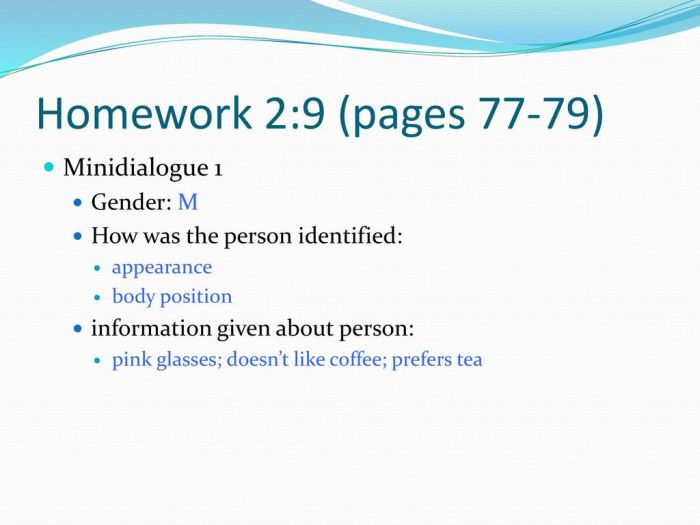Embark on a linguistic journey with Signing Naturally Answer Key Unit 2, a comprehensive guide to the intricacies of American Sign Language (ASL). This resource unveils the vocabulary, grammar, conversation skills, and cultural context that underpin ASL, empowering you to communicate effectively within the Deaf community.
Delving into the intricacies of ASL, this guide explores the fundamentals of vocabulary and phrases, unraveling the meaning behind each sign. It delves into the grammar and sentence structure, providing a framework for constructing meaningful ASL sentences. Furthermore, it imparts essential conversation skills, equipping you with the confidence to engage in meaningful interactions.
Vocabulary and Phrases
Unit 2 of Signing Naturally introduces a range of new vocabulary and phrases that are essential for basic communication in American Sign Language (ASL). These include:
- Hello
- My name is
- Nice to meet you
- Where are you from?
- I am from
The table below provides a comprehensive list of the vocabulary and their corresponding ASL signs:
| Vocabulary | ASL Sign |
|---|---|
| Hello | Extend your index finger and middle finger together, palm facing you. Wave your hand slightly forward and back. |
| My name is | Place your hand on your chest, palm facing you. Move your hand slightly forward and back. |
| Nice to meet you | Make a “Y” shape with your fingers, palm facing you. Move your hand slightly forward and back. |
| Where are you from? | Extend your index finger and point it towards the person you are asking. Move your hand slightly up and down. |
| I am from | Extend your index finger and point it towards yourself. Move your hand slightly up and down. |
Grammar and Sentence Structure

Unit 2 of Signing Naturally covers the basic grammar and sentence structure of ASL. ASL sentences are typically composed of three main components:
- Subject
- Verb
- Object
For example, the sentence “I am happy” would be signed as follows:
- Subject: I (point to yourself)
- Verb: am (make a “V” shape with your fingers and move it up and down)
- Object: happy (make a “C” shape with your hand and move it towards your chest)
ASL also uses a variety of facial expressions and body language to convey meaning. For example, a raised eyebrow can indicate a question, while a smile can indicate happiness.
Conversation Skills
Unit 2 of Signing Naturally introduces basic conversation skills, such as greeting people, introducing yourself, and asking questions. These skills are essential for effective communication in ASL.
When greeting someone in ASL, it is important to make eye contact and smile. You can then sign “Hello” or “Nice to meet you.” To introduce yourself, you can sign “My name is” followed by your name.
To ask a question, you can use a question mark sign. For example, to ask “Where are you from?” you would sign “Where” followed by the question mark sign.
Here are some tips for effective communication in ASL:
- Make eye contact and smile.
- Sign clearly and slowly.
- Use facial expressions and body language to convey meaning.
- Be patient and don’t be afraid to ask for clarification.
Cultural Context

The signs and phrases learned in Unit 2 of Signing Naturally are rooted in the Deaf community and its unique culture. ASL is a visual language that has its own grammar, syntax, and vocabulary.
The Deaf community has a rich history and culture that is distinct from the hearing world. Deaf people have their own schools, organizations, and social events. They also have their own unique way of life, which is often referred to as Deaf culture.
ASL is an important part of Deaf culture. It is the primary language of communication for Deaf people and is used in all aspects of their lives. ASL is also a symbol of Deaf pride and identity.
Q&A: Signing Naturally Answer Key Unit 2
What is the significance of cultural context in ASL?
Cultural context plays a crucial role in ASL, as it shapes the meaning and usage of signs. Understanding the history, values, and perspectives of the Deaf community is essential for effective communication.
How can I improve my ASL conversation skills?
Practice is key to enhancing conversation skills. Engage in regular conversations with Deaf individuals, attend workshops, or join ASL clubs to gain confidence and fluency.